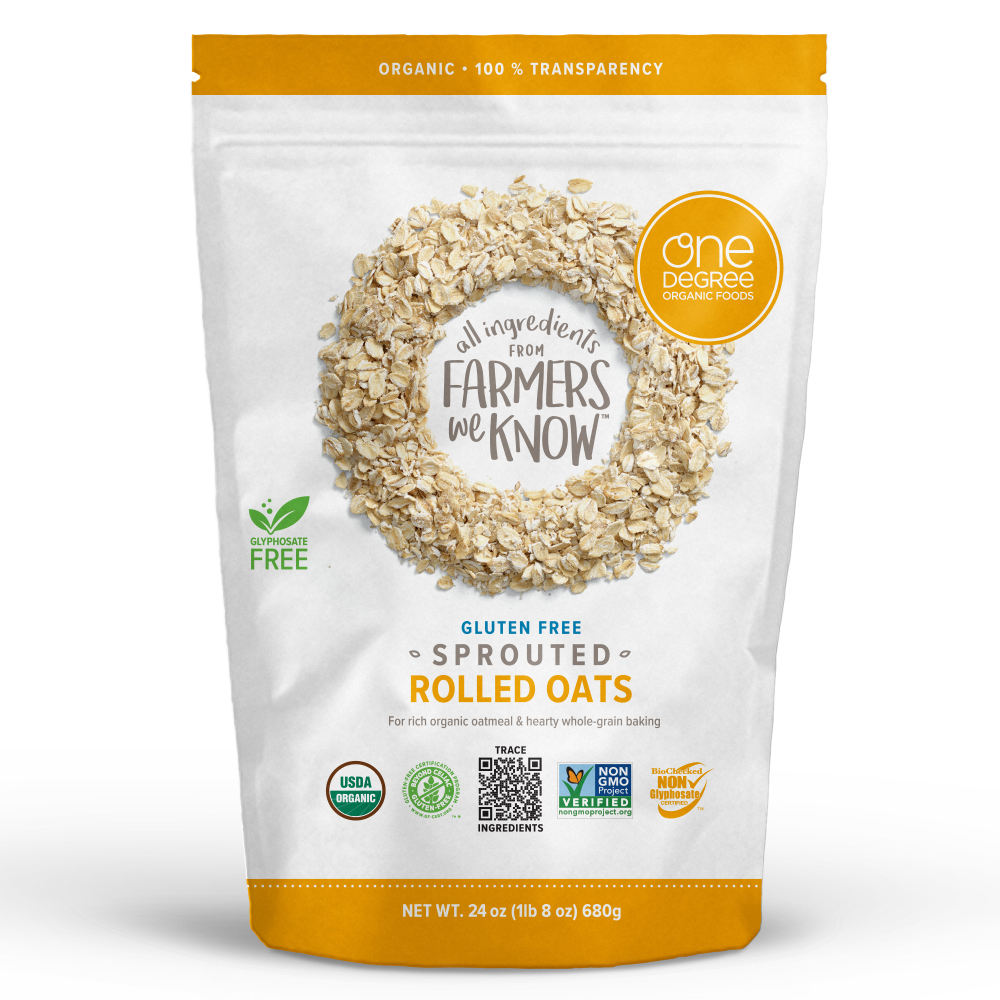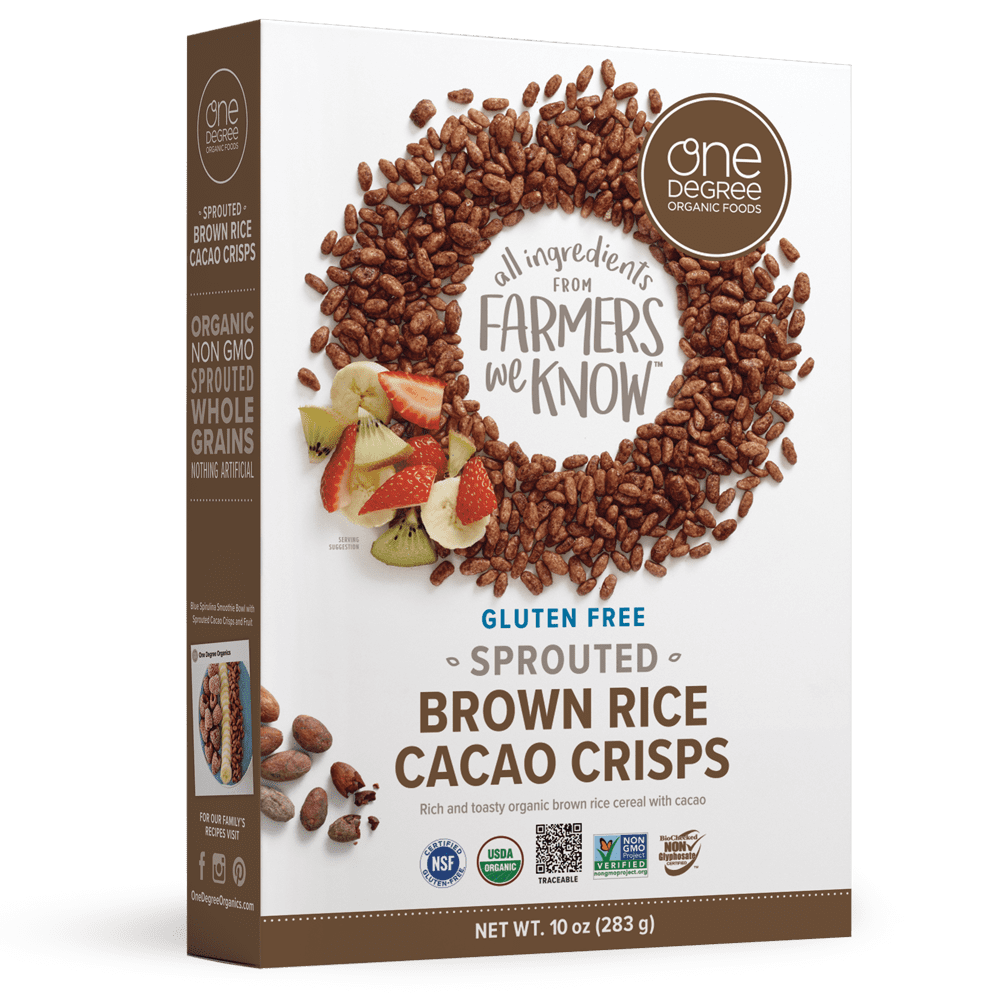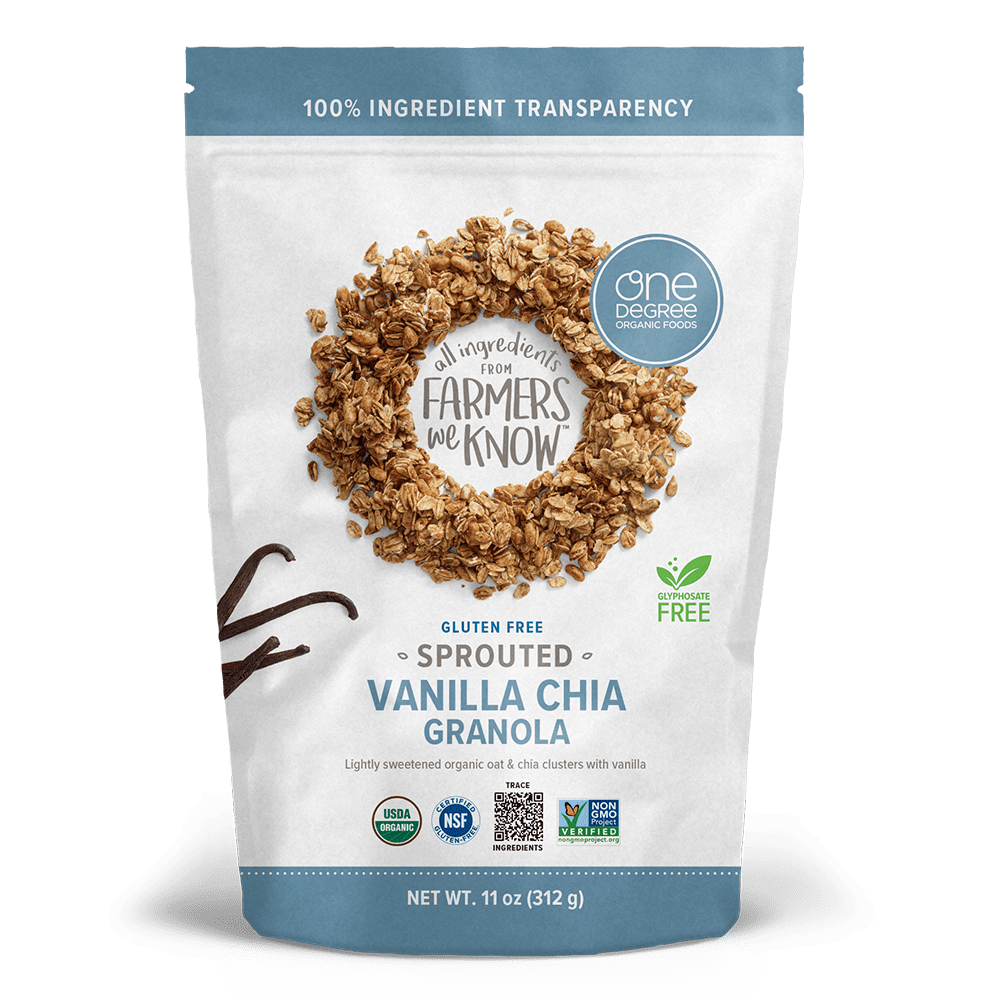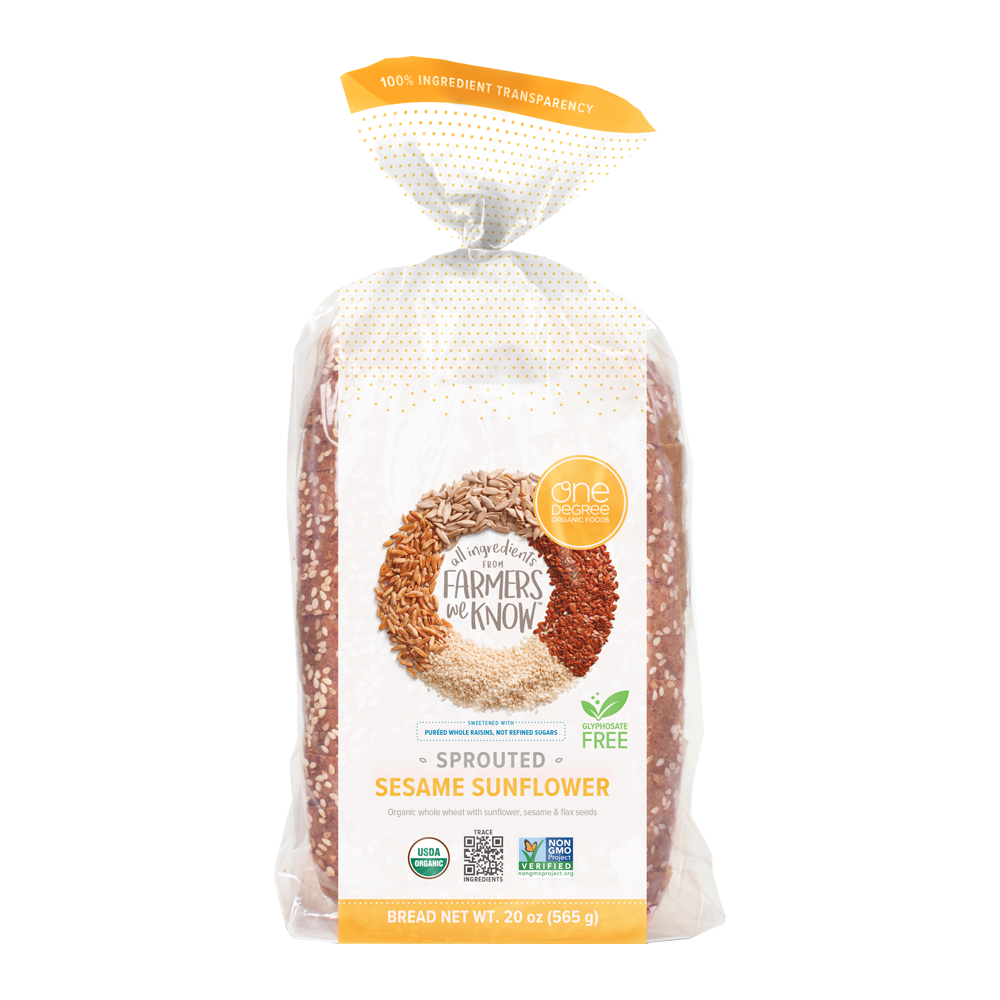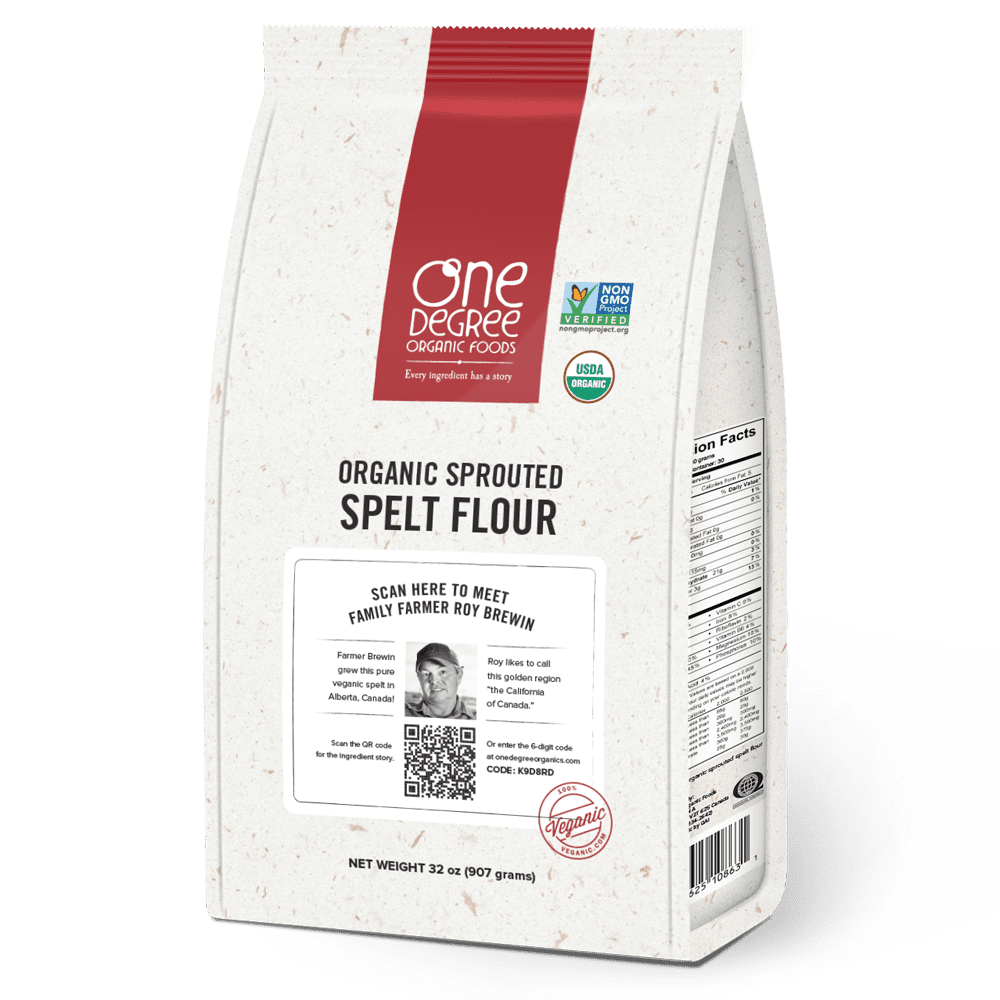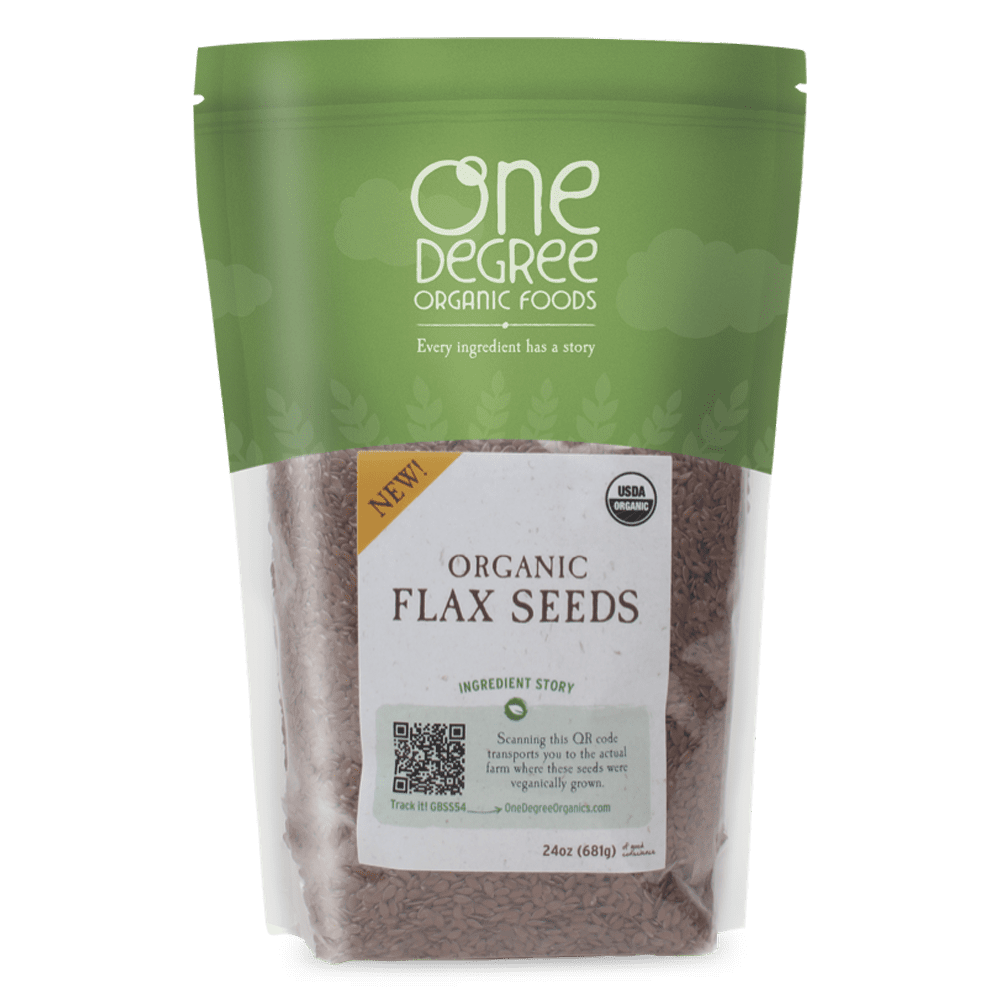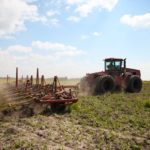Regenerative Agriculture vs. Plant-Based Organic Farming
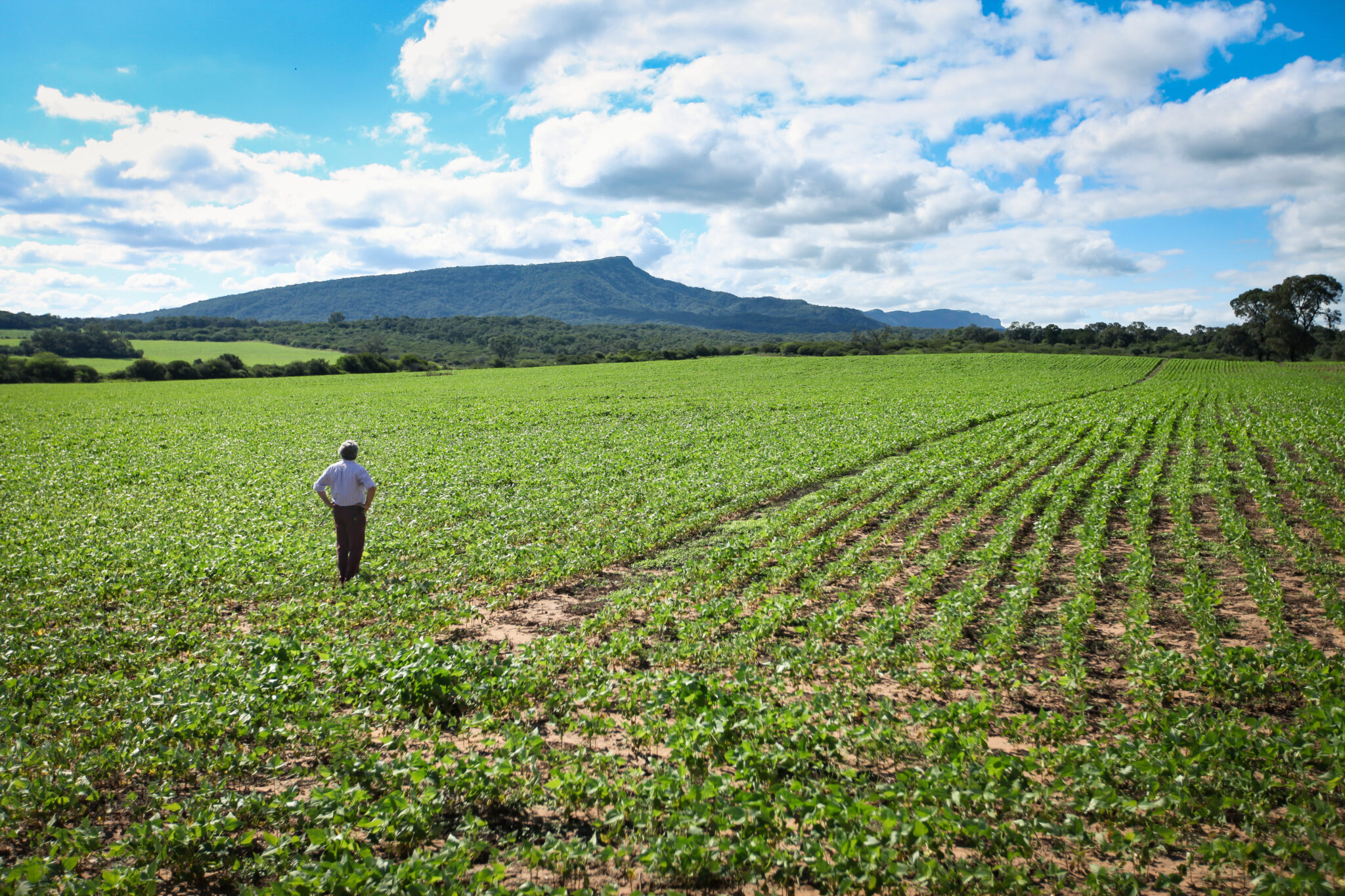
As multinational food brands promise to be more sustainable with ingredient sourcing, the buzz about regenerative agriculture is growing. But what does regenerative agriculture mean? And how does regenerative agriculture compare to certified organic agriculture—or to plant-based organic farming? Keep reading to find out:
- What is Regenerative Agriculture?
- What are Regenerative Agriculture Practices and Principles?
- Regenerative Agriculture vs. Certified Organic Agriculture:
- Is Regenerative Agriculture Organic?
- What is Certified Organic Agriculture?
(And is Certified Organic Agriculture Regenerative?) - What is Plant-based Organic Farming?
(And What Do Plant-based Organic Farming and Regenerative Agriculture Have in Common?) - What is Regenerative Organic Certified Agriculture?
- Why Everyone Should Care About Healthy Soil
Regenerative Agriculture in Context:
Sustainable Solutions for a Broken Food System
The problems of modern industrial agriculture have been recognized for over a hundred years. But with growing awareness of climate change—and the significant environmental impact of conventional farming—the cry for more sustainable agriculture is louder than ever.
Alongside the established organic agriculture movement, scientists, farmers, and policy makers have explored several sustainable farming approaches as potential solutions to our broken global food system.
And from a field that includes agroecology ideas ranging from climate-smart agriculture to circular agriculture, conservation agriculture to low-input farming, regenerative agriculture has emerged as the hottest contender.
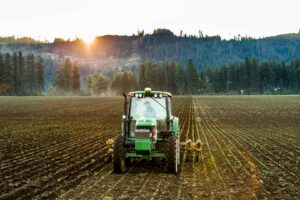
What is Regenerative Agriculture?
Although proponents and practitioners of regenerative agriculture agree on a collection of core themes, objectives, and practices, there is no legal or regulatory definition of regenerative agriculture1,2.
Nor is there yet a unifying organization that represents a significant portion of the global regenerative agriculture community with the voice or momentum to advocate for one. (Though the international movement to change that through regional alliances is growing)3.
And the lack of a clear definition of what regenerative agriculture means is the source of greenwashing criticism4. As some of the world’s biggest food corporations hop on the regenerative agriculture bandwagon, vague goals and fuzzy targets offer accountability loopholes for sustainability promises made in that absence.
With no universal definition at an industry, academic, regulatory, or legal level, regenerative agriculture also has no universal approach.
Thus, regenerative agriculture is not a prescriptive agricultural method5 with rules for what should (or should not be) done.
Instead, regenerative agriculture farmers pick and choose from a collection of methods, ideas, and practices as they see fit based on their climate, soil type, and the mix of crops they farm—and their individual means, preferences, and goals.
Despite this, every attempt to define regenerative agriculture agrees:
Restoring / improving soil health and reversing biodiversity loss are the key drivers of every interpretation of this emerging approach to more sustainable farming1,2.
And for most, resource management, water retention, resilience to climate change—and using soil carbon sequestration to help fight it—are also core themes.
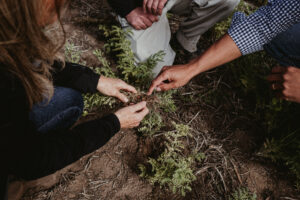
Regenerative Agriculture Principles and Practices
Grounded in sustainability and rooted in soil health, regenerative agriculture aims to restore, enhance, and conserve soil through natural processes within a farming system.
Although every farmer is free to interpret and apply regenerative agriculture ideas to their unique needs, most draw from the following set of common principles and practices in how they manage soil health and support biodiversity5,6:
Common Regenerative Agriculture Practices:
Manage Soil Health
- Leave soil undisturbed with zero-till / minimal-tillage practices
- Keep living roots in soil all year with cover crops
- Retain stubble and other mulch and green manure
- Increase organic matter and carbon in soil with compost, green and animal manures, biochar, and compost teas
Support Biodiversity
- Foster plant diversity through:
-
-
- Diverse crop rotations
- Multi-species cover crops
- Intercropping or companion planting
-
- Integrate tree crops (may include woodland pasture or other agroforestry approaches)
- Use rotational grazing and/or holistic grazing with small volume livestock
- Reduce, limit, or avoid pesticides and/or other synthetic inputs
Is Regenerative Agriculture Organic?
Regenerative agriculture is not organic farming. Unlike certified organic farming, there are no regulatory requirements or prohibitions for how regenerative agriculture is done. So, a farmer practicing regenerative agriculture may—or may not—use organic methods at their discretion.
So, it is possible to practice regenerative agriculture and still use GMOs, synthetic pesticides and fertilizers, and other methods common in conventional farming but forbidden by organic standards.
What is Certified Organic Agriculture?
While it is possible to practice regenerative agriculture along a broad spectrum, certified organic agriculture is clearly defined and follows a strict legal and regulatory framework in most countries of the world.
Organic standards prohibit the use of synthetic pesticides and herbicides, synthetic nitrogen, potassium, and phosphorous fertilizers, and GMOs. Why? To avoid harm to soil, plant, animal, environmental, and human health1.
When you purchase certified organic food, a certified organic seal from an internationally recognized body ensures it was produced without synthetic chemicals or GMOs—whether it bears the USDA Organic, Canada Organic, Quality Assurance International, Ecocert, or another internationally recognized logo.
Is Certified Organic Agriculture Regenerative?
Although the principles of organic agriculture connect the concepts of health, ecology, fairness, and care to the practice7, organic certification standards focus on inputs. Specifically, what is and is not allowed.
Depending on the crop, a certified organic farmer can comply with all regulations—using no synthetic fertilizers, pesticides, herbicides, or GMOs—without making regenerative farming’s commitment to soil health.
What is Plant-based Organic (Veganic) Farming?
At One Degree Organics, we go beyond certified organic with our ingredients. Our farmer partners aren’t just certified organic—they also use plant-based organic farming methods.
Veganic (vegan organic) farming means no animal by-products—like manure, bone-, blood-, fish-, or feather-meal—are used as fertilizer. Instead, plant-based organic farmers use other methods to return nutrients and add organic matter to the soil.
And many of the methods and practices used in plant-based organic farming overlap with those used in regenerative agriculture.
What Do Plant-based Organic (Veganic) Farming and Regenerative Agriculture Have in Common?
For both veganic farming and regenerative agriculture, sustainability is profoundly connected to soil health.
Proponents of both believe the sustainability problems created by conventional agriculture and industrial monoculture farming cannot be solved by technology—or the thinking behind it that has led to depleted soil and dependence on synthetic fertilizers.
So, both approaches invest in building soil health with the belief that soil is an essential resource needed to grow healthy food, and that restoring soil biodiversity improves sustainability in farming and for the environment. (See our Soil Health Sidebar to learn why)!
To that end, plant-based organic and regenerative agriculture farmers use many of the same practices to build healthy soil naturally.
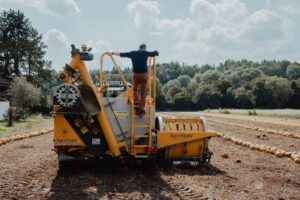
Common methods shared between plant-based organic farming and regenerative agriculture include:
- Crop rotation
(growing nitrogen-fixing crops like clover, alfalfa, lentils, and legumes in rotation with other crops) - Intercropping and companion planting
(growing two or more mutually supportive crops in the same field) - Cover crops
(non-harvested crops planted to keep live roots in soil and left to add organic matter (green manure) to nourish a healthy soil microbiome) - No-till or reduced-till soil management
- Plant-based compost
In addition to (and likely because of) these shared soil-building methods, both plant-based organic farming and regenerative agriculture appeal to smaller-scale, independent farmers.
These methods can require more hands-on care and time. But they are also cost-effective for family farmers with smaller plots of land where the economies of scale that justify investing in large-scale industrial farm equipment can never be realized.
And they are accessible even to smallholding farmers in developing countries who cannot afford the synthetic fertilizers conventional agriculture depends on to farm depleted soil.
The farming methods common to veganic and regenerative agriculture empower farmers like Pak Fransiskus—who grows organic cacao for Tripper, our farm partner in Bali, Indonesia—to restore healthy soil, feed their families, and better their lives and communities.
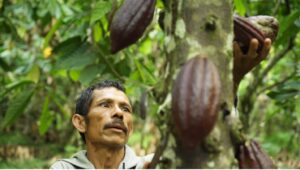
The Convergence of Certified Organic and Regenerative Agriculture: Regenerative Organic Certified and Organic 3.0
One Degree and our plant-based organic farmer partners are not alone in our belief that certified organic standards are a starting point—not a destination.
From the Rodale Institute to IFOAM – Organics International, leaders in the organic movement who paved the way for certification now advocate for organic farming to go beyond the basics of sustainability.
Regenerative organic agriculture expands the scope of certified organic with the belief that is no longer enough to maintain resources and do no harm—we must restore soil health to ensure the future of our planet8.
Clearly defined by the new Regenerative Organic Certified standard which uses USDA Organic certification as the baseline, regenerative organic agriculture adds the soil health practices common to regenerative agriculture and plant-based organic farming, and layers social fairness practices into its scope.
And where Organic 2.0 established global standards and worldwide demand for organic food, Organic 3.0 agrees that it is no longer enough merely to prove what we do not do (use synthetics and GMOs)9.
For organic agriculture to be truly sustainable—and make a meaningful impact on the health of the planet and all the people on it—we must do what we do with purpose. Starting with the soil, and for the benefit of all.
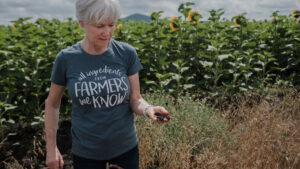
Why Everyone Should Care About Healthy Soil
An essential and non-renewable natural resource, healthy soil is vital to ecosystems and human life10. According to the United Nations (FAO11 and UNDRR):
- Soil is not only fundamental for growing crops for food, fiber, feed, and fuel—it is also a filter for clean water and a major carbon storehouse that helps regulate carbon dioxide and greenhouse gas emissions.
- Although soil erosion and degradation happen naturally, human activities—including intensive agriculture, deforestation, over-grazing, and unsustainable land use—have increased the erosion and degradation rate by up to 1,000 times.
- 33% of the Earth’s soils are already degraded. Over 90% could be degraded by 2050. And it can take up to 1,000 years to produce 2 – 3 cm of topsoil.
- Soil erosion and degradation are a major threat to global food security and can lead to a 50% loss in crop yields.
To be clear: At One Degree, our commitment to plant-based organic food is steadfast. And we applaud any approach that moves away from conventional agriculture’s dependence on synthetic fertilizers, herbicides, and pesticides, and actively works to restore soil health using regenerative methods.
Because when the health of the planet—and every person on it—depends on sustainable soil management, meaningful progress (not perfection) matters.
Read this article to learn more about our Veganic Principles and why One Degree Organics products are made with the best plant-based organic ingredients in the world.
Scroll down to sign up for our newsletter to meet our plant-based organic farmer partners and get healthy organic recipes your family will love.
And follow us on Instagram, Facebook, and Pinterest for more!
References:
[1] Rempelos, L., Kabourakis, E., Leifert, C. Innovative Organic and Regenerative Agricultural Production. Agronomy 2023, volume 13, issue 1344. Available from: https://doi.org/10.3390/agronomy13051344https://www.mdpi.com/2073-4395/13/5/1344, accessed December 18, 2023.
2 Schreefel, L, Schulte, R.P.O., de Boer, I.J.M., Pas Schrijver, A., van Zanten, H.H.E., Regenerative agriculture – the soil is the base. Global Food Security, volume 26 (2020), 100404, August 6, 2020. Available from: https://www.sciencedirect.com/science/article/pii/S2211912420300584, accessed December 20, 2023.
3 Regeneration International, Regeneration Alliances. 2019. Available from: https://regenerationinternational.org/regeneration-alliances/, accessed January 11, 2023.
4 De Sousa, A. and Afanasieva, D. for Bloomberg News, Big Food Runs Greenwash Risk Over Regenerative Farming Push. BNN Bloomberg, Investing, September 20, 2023. Available from: https://www.bnnbloomberg.ca/big-food-runs-greenwash-risks-over-regenerative-farming-push-1.1973912, accessed December 19, 2023.
5 Khangura, R., Ferris, D., Wagg, C., Bowyer, J. Regenerative Agriculture—A Literature Review on the Practices and Mechanisms Used to Improve Soil Health. Sustainability 2023, 15, 2338. Available from: https://www.mdpi.com/2071-1050/15/3/2338, accessed December 18, 2023.
6 Giller, K. E., Hijbeek, R., Andersson, J. A., & Sumberg, J., Regenerative Agriculture: An agronomic perspective. Outlook on Agriculture, volume 50, issue 1, pages 13 – 25, 2021. Available from: https://journals.sagepub.com/doi/full/10.1177/0030727021998063#table1-0030727021998063, accessed December 18, 2023.
7 IFOAM Organics International, The Four Principles of Organic Agriculture: The Principles of Organic Agriculture are Health, Ecology, Fairness and Care. International Federation of Organic Agriculture Movements (IFOAM – Organics International), 2023. Available from: https://www.ifoam.bio/why-organic/shaping-agriculture/four-principles-organic, accessed December 19, 2023.
8 Rodale Institute, Regenerative Organic Agriculture. Available from: https://rodaleinstitute.org/why-organic/organic-basics/regenerative-organic-agriculture/, accessed December 18, 2023.
9 Arbenz, M., Gould, D., and Stopes, C. on behalf of IFOAM Organics International and the Sustainable Organic Agriculture Action Network (SOAAN), Organic 3.0 for truly sustainable farming & consumption, 2nd updated edition. 2016. Available from: https://www.ifoam.bio/sites/default/files/2020-05/Organic3.0_v.2_web.pdf, accessed December 19, 2023.
[1]0 United Nations Office for Disaster Risk Reduction (UNDRR), Understanding Disaster Risk: Soil Erosion: Unique identifier / Notation EN0019. UNDRR, 2021. Available from: http://www.undrr.org/quick/78513, accessed December 19, 2023.
[1]1 Food and Agriculture Organization of the United Nations (FAO), Global Symposium on Soil Erosion: Key Messages.FAO, 2023. Available from https://www.fao.org/about/meetings/soil-erosion-symposium/key-messages/en/, accessed December 19, 2023.
